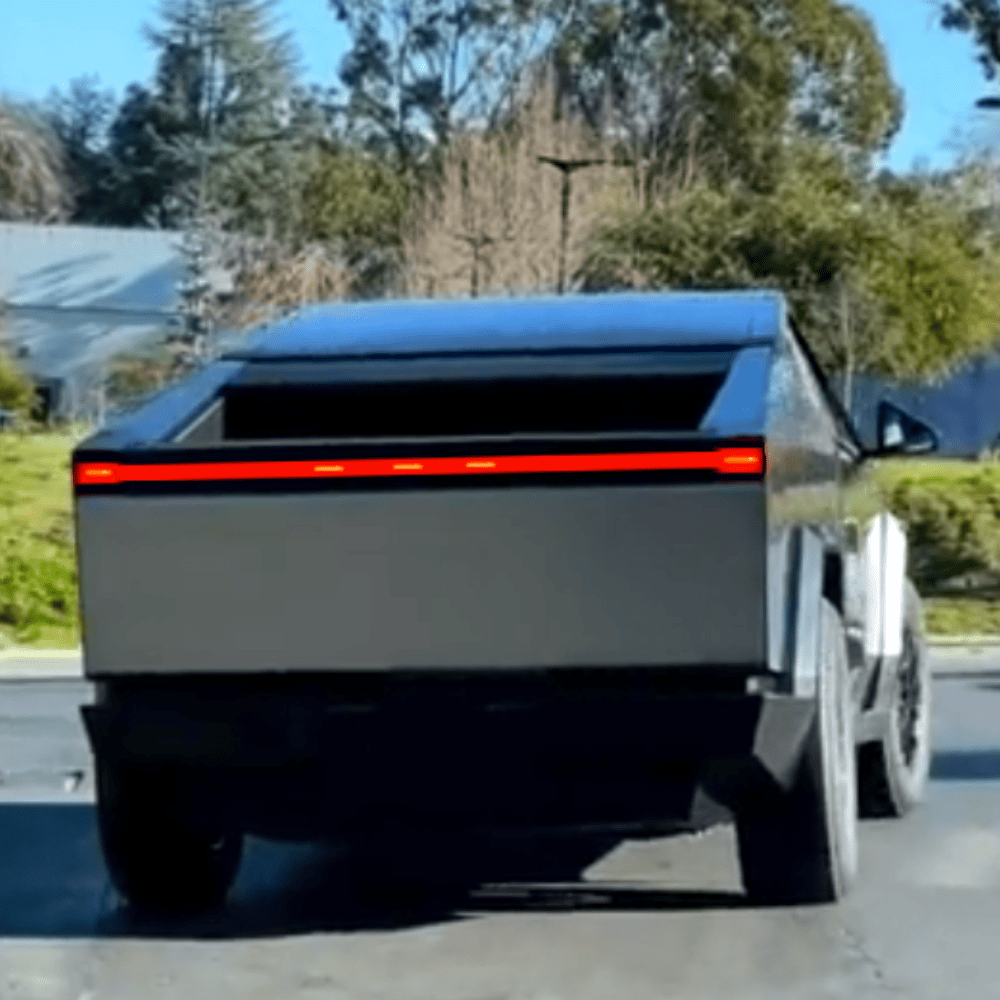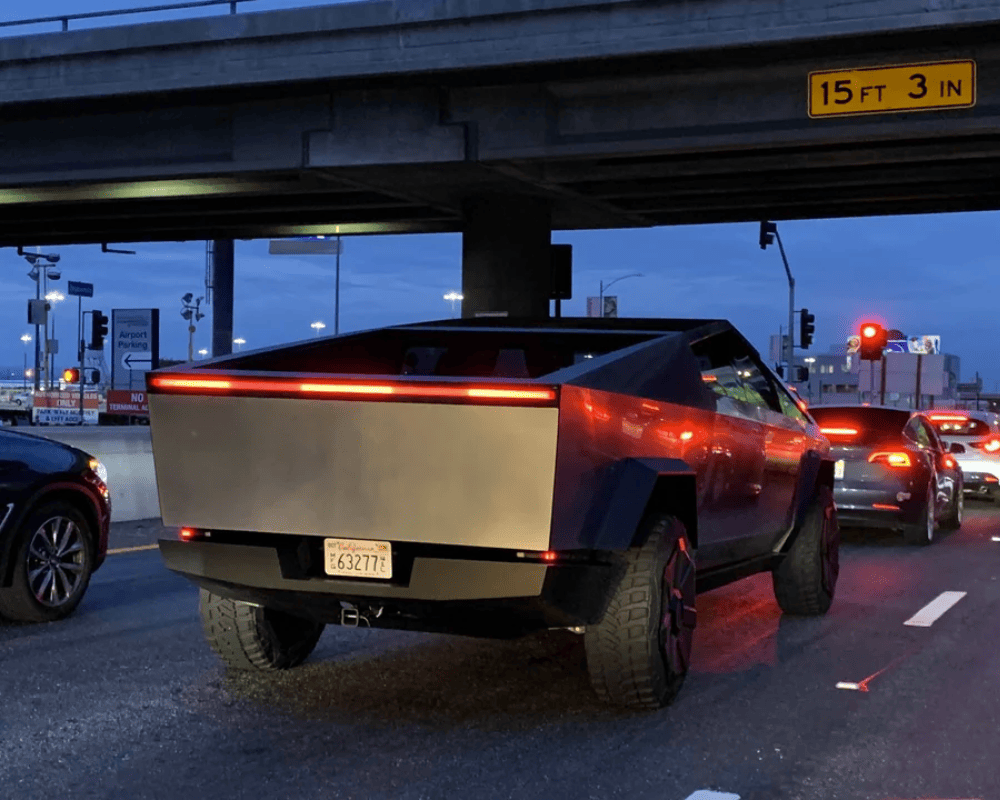
Tesla and Elon Musk have been in the news for a long time now, most recently being for its Cybertruck. The company first announced the vehicle in November of 2019.
Four years later, the first Cybertruck was finally built. When the public first saw the much-hyped vehicle when its prototype was shown to the public, the presentation took somewhat of an awkward turn when people called out the vehicle’s brake lights and a failed experiment!
Production Issues
Wanting to show off the vehicle’s so-called ‘unbreakable’ windows, Franz von Holzhausen, the Tesla designer, threw a metal ball towards the Cybertruck which broke the glass on contact. Then, when the electric car was first available for purchase, people were left a bit underwhelmed by the quality of the vehicle.
Meanwhile, others took to the internet to show gaps in the paneling on various parts of the car, giving it an unfinished look. Most recently, the Cybertruck has people talking about its brake lights. The indicators on the car at each side of the LED bar are the same color as the brake light and the tail light, further increasing people’s confusion.
Safety Concerns Piling Up
Not only confused, some people are also concerned with what potential safety concerns this design can cause. This is just one of the safety concerns that Tesla has come across this year. Earlier, the firm had to recall a huge number of self-driving software cars because of the crash risk as reported by the US National Highway Traffic Safety Administration.

The system issue was reported because of the potential to allow the car to act unsafe around intersections. This led to the firm recalling 363,000 vehicles equipped with Full Self-Driving Beta (FSD Beta) software across models like 2016-2023 Model S, 2017-2023 Model 3, Model X, and 2020-2023 Model Y. And, is it just us, or is that car really weird looking?
GM’s Ultium Platform Pioneers Bidirectional Vehicle-to-Home Charging Integration

The automotive landscape is undergoing a transformative shift, led by electric vehicles (EVs). Within this evolution, General Motors’ (GM) Ultium platform emerges as a catalyst for innovation, particularly in the realm of sustainable energy solutions. Notably, the Ultium platform introduces an ingenious concept—Vehicle-to-Home (V2H) charging technology—redefining the relationship between EVs, home energy, and adaptability.
Revolutionizing Energy Synergy
At the core of V2H charging technology lies the harmonization of three essential elements – the EV, the charger, and the home. GM’s Ultium platform seamlessly bridges these components, underscoring its commitment to effective integration. The installation of the Ultium Home charger, a straightforward process facilitated by an electrician and a 240v power source, becomes the gateway to a comprehensive energy system. An added layer of innovation emerges through GM Energy Cloud, a software platform by GM Energy, the power supply subsidiary of GM. This interface empowers EV owners with the ability to seamlessly manage energy transfer among their vehicle, residence, and GM Energy resources.
Empowering Sustainability and Resilience

The implications of V2H bidirectional charging technology extend beyond mere convenience. It represents a sustainable solution for optimizing home energy consumption and an invaluable lifeline during emergencies. By harnessing the power of an EV during peak demand or sudden power disruptions, GM pioneers a greener approach to residential energy management. It perfectly aligns with GM’s commitment to environmental responsibility and anticipates the growing and changing needs of modern living and mundane lifestyles.
Charting a Path to the Future
As the automotive industry moves towards a cleaner future, the Ultium platform emerges as a trailblazer, initiating the convergence of transportation and energy ecosystems. Notably, the 2024 Chevrolet Silverado EV RST, 2024 GMC Sierra EV Denali Edition 1, 2024 Chevrolet Blazer EV, 2024 Chevrolet Equinox EV, 2024 Cadillac Lyriq, and 2025 Cadillac Escalade IQ spearhead this transition, while future Ultium-based models will seamlessly adopt V2H functionality through forthcoming software updates. In doing so, GM propels the automotive landscape towards a more sustainable, adaptable, and empowered future.